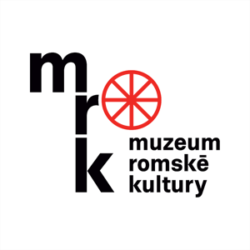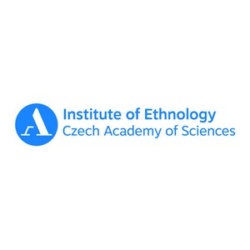FAQ - frequently asked questions
Here you will find answers to the questions we have been asked about the database.
Why are the original texts of the testimonies not included in the database, but only their abstracts?
We originally intended to publish the original texts of the testimonies of Roma and Sinti in the online database. However, after several consultations with lawyers who are specialists in personal data protection and copyright law, we had to abandon this plan. Although the witnesses agreed to publish their testimonies in print, they did not give their consent to publish them online. In addition, individual publishers have rights to the texts, some of which no longer exist, and it would have been very difficult to legally treat the online publication of the texts they published. We have therefore decided to prepare detailed abstracts of the testimonies. Moreover, these abstracts are structured in the same way, have a maximum length and are written in Czech and English, even though the published testimonies were also in other languages or dialects. However, users who are familiar with the languages of the original testimonies (Czech, Slovak, Romani) are strongly encouraged to read the source texts. In case these publications are still available, we also refer to the online purchase option.
How many testimonies are included in the database?
As of August 2023, the database contains just over 100 testimonies. However, we will continue to process testimonies for the next two years. More testimony abstracts will be added on an ongoing basis. We estimate a total of 250 printed testimonies. We are still in the process of researching other sources - not only books but also journals.
What testimonies are included in the database?
In defining the corpus of testimonies, three conditions were crucial for us in processing them into a database. First, geographically we focus on testimonies of Roma and Sinti from the Czech lands and from Slovakia.
Second, only testimonies of people who experienced the war in person were included. Although we are aware of rare testimonies that are part of family memory, known to us from the mouths of descendants of survivors, only personal testimonies of people born before the war or during the war years are included the database. Although we were hesitant about including testimonies of people born during the war, as their experiences were often vicarious, we decided to do so not only because it is impossible to draw a precise dividing line between their own and vicarious experiences, but also because these testimonies often offer the unique perspective of a young child.
Third, only testimonies that have already been published in print were included in the database. In making this decision, we were particularly mindful of copyright and the consent of the witnesses to publication of their memoirs. Although we are aware that very valuable information is contained in many other testimonies taken in the form of video or audio recordings by individuals and non-profit organizations, we decided to limit our selection to testimonies published in print. In the case of printed testimonies, especially in book form, it can be assumed that the witnesses not only agreed to the publication but also had the opportunity to authorize the text. The abstracts of specific sources explain why the testimonies contained in them were not included in the database (for more on this topic, see the sections on Used Sources used and Other Sources).
How can the database be searched?
There are four ways of searching.
1) Full text search. By entering any name, place, term, the user can access the testimonies that contain that word. Full text search is available in two places on the site, each marked with a magnifying glass icon (in the main bar on the far right, or in the database search).
2) Search by first name, last name, year and place of birth (or a combination of these criteria). By clicking the Advanced Search button, you can search by even more criteria.
3) Search by map.
- Here you can search by first and last name. By clicking on the icons next to the name, locations relevant to the person will appear on the map.
- By entering the place name in the place of birth field and clicking on any of the icons, the user can learn about the fate of Roma and Sinti born in a particular location: e.g. where they were interned, where they hid, or whether they lived in their place of birth before the war.
- A further option is to search by icons and combinations of icons. In this way, the user can find out, for example, where Roma and Sinti were interned, where they hid, where the sites of mass murders were, or where they took part in armed struggle.
4) Search by the glossary.
What is the timeline for the project?
The database of testimonies, which we have been working on since 2019, will be made available in several phases. In the first phase - in 2023 - we are publishing the first hundred processed testimonies. In the second phase, we intend to update the database by processing another hundred and fifty testimonies. We expect to conclude the project Testimonies of Roma and Sinti from the Czech lands and Slovakia by the end of 2025. In the following years we would like to continue our work by enlarging the database with testimonies of Roma from other Nazi occupied European countries.
May I quote the abstract of the testimony? If yes, how?
The abstracts of the testimonies may of course be quoted. The abstracts are copyrighted by the Testimonies of Roma and Sinti Project and the Prague Forum for Romani Histories at the Institute of Contemporary History. Below each abstract there is an information on how to cite the abstract (see How to Cite Abstract).
The structure of the citation is as follows:
Abstract of the testimony from: [source where the testimony is published, including page range]. Testimonies of Roma and Sinti. Project of the Prague Forum for Romani Histories (Institute of Contemporary History, Czech Academy of Sciences), [link to website with the specific testimony] (accessed [current date]).
For example, today, July 25, 2023, when we write the answer to the received question, we would include the following link when quoting from the testimony of Alžběta Danielová:
Abstract of the testimony from: NEČAS, Ctibor, ed. Nemůžeme zapomenout = Našťi bisteras : nucená táborová koncentrace ve vyprávěních romských pamětníků. Olomouc: Univerzita Palackého, 1994, 95-96. Testimonies of Roma and Sinti. Project of the Prague Forum for Romani Histories (Institute of Contemporary History, Czech Academy of Sciences), https://roma-testimonies-beta.... (accessed 7/25/2023)




